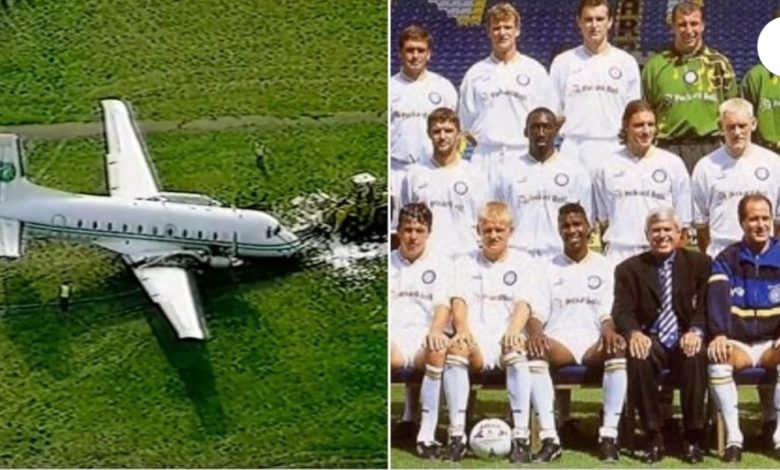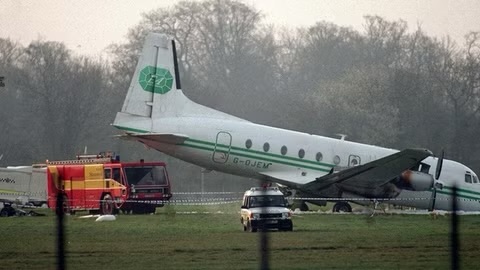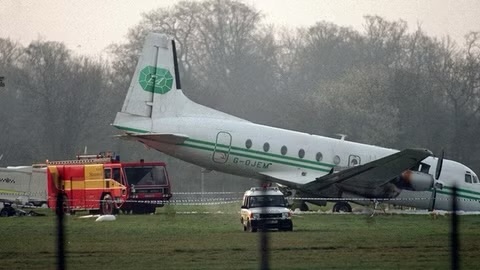
Terrifying Story of Leeds United Plane Crash in 1998
Terrifying Story of Leeds United Plane Crash in 1998
On March 30, 1998, Leeds United suffered a dismal 3-0 defeat at West Ham United, failing to show up in any meaningful way. Match reports filed for the following morning recorded a mistake for the first goal, a mistake for the second and a mistake for the third; blunders all around. At the time, it seemed things couldn’t get any worse for George Graham’s side.
Little did they know, of course, that less than three years later, they would embark on the club’s golden generation, reaching the Champions League semi-finals after a victory over Deportivo La Coruaa. This period would see players like Harry Kewell, Jonathan Woodgate, and Lee Bowyer lead the reawakening of a sleeping giant under David O’Leary, reestablishing the Lilywhites’ status as one of England’s juggernaut football clubs.
However, they were facing much larger issues at that moment. While the squad prepared for a quiet, introspective journey home, the events that followed showed that matters would, indeed, worsen, despite the overarching belief that the defeat was punishment enough. Bryn Law, the BBC Radio Leeds commentator, quipped afterward: “The only good thing about what happened next was that it stopped people talking about the result.” At that time, though, it was no laughing matter, as the entire Leeds United class of ’98 found themselves flirting with death, subjects of an air disaster.
Leeds United’s Plane Crash In 1998
The Lilywhites’ golden generation could have been over before it even started

The atmosphere was tense as Leeds United returned from their disastrous Monday night defeat against West Ham, but nothing could have prepared the players for what was to come, as the team were forced into an emergency landing shortly after takeoff. Reflecting on that night, Lee Bowyer, on a recent episode of ‘Let’s Be Having You! The 00s Football Podcast’ recalled:
“At the time, we had obviously lost to West Ham, two or three-nil on a Monday night and I’ll never forget, because that was probably the only time that George [Graham] made me fly home after a London game, because he used to let me stay home and see my family. But because we were so bad, he said ‘no, you’re going back.’”
As they boarded a small propeller aircraft in the dead of night, the weight of the defeat lingered heavily. Suddenly, though, as they were climbing, a loud bang shattered the silence. “We heard a big bang, and then we looked out the window and saw the engine on our side had blown. So, now, it’s on fire.” Panic set in as players stood up, shouting in fear, “Take it down, take it down!”
The situation escalated quickly. “To cut a long story short, we’re coming down to crash-land, but then we come down at such an angle that the front wheel then breaks.” The chaos in the cabin intensified, and fear took hold. “Your mind starts playing games. You look out the window and convince yourself it’s going to blow up because, in the movies, that’s what happens. It’s just going to blow up; that’s it, we’re dead.”

In a moment that felt like an eternity, they crash-landed, the plane’s nose digging into the ground. Bowyer continued:
“Everyone’s trying to rush out as the plane’s nose is in the dirt. Afterward, the fireman said the plane should have exploded within 30 seconds to a minute, so we were really lucky.”
They were fortunate to have landed at Stansted Airport, known for having the longest runway in Europe. “We were also lucky that it was Stansted because we were able to go up and land at the same time. But the normal procedure is to carry on, turn around, and then land. The fireman said, if we had to do that, it would have blown up.” Bowyer finished his story by joking: “Now I say to anyone who’s a nervous flyer to fly with me, as it can’t happen twice, surely?”
Captain John Hackett’s Life-Saving Actions
There’s a website dedicated to the captain, detailing other survivor stories




